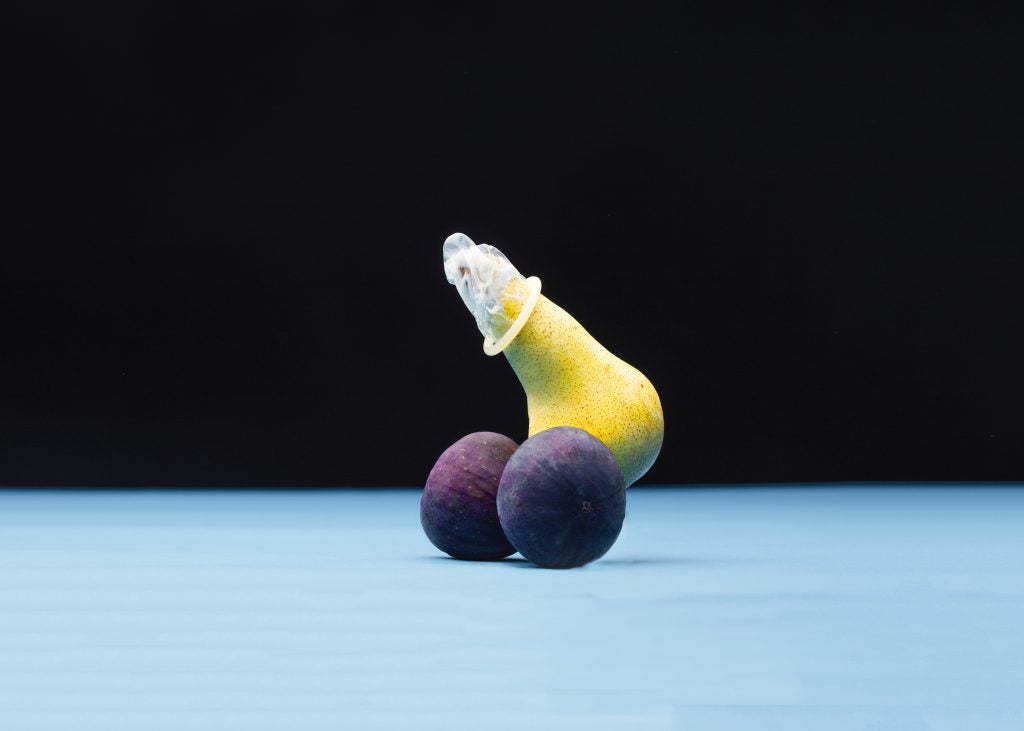What is Epididymal Hypertension?
Epididymal hypertension, or “blue balls” refers to testicular aching that occurs when the blood in the male’s genitals is retained after prolonged sexual arousal and is not dissipated by an orgasm.

What Causes Epididymal Hypertension?
When a man becomes sexually aroused, the arteries that carry blood to his genitals enlarge, while the veins that leave the genital area constrict, allowing less blood to escape. This uneven rate of blood flow increases the quantity and pressure of blood flow and traps it in the genital area. This pressure is responsible for producing an erection and making the testes swell to be 25-50% larger than their normal size. If an orgasm is achieved, the blood vessels will return to their normal size and the volume of blood in the genitals quickly returns to its normal level. By contrast, if a man does not have an orgasm, blood in the genitals builds up through a process called vasocongestion and may create sensations of heaviness, aching, or discomfort.
The reason this condition is termed “blue balls” is that the scrotum may turn a bluish hue from the accumulation of deoxygenated blood in the testicles. Oxygen-rich blood on the surface of the skin creates a red color, while blood with little oxygen appears blue. The longer blood stays in the testes and scrotum without circulating to the heart and lungs the less oxygen it obtains and the bluer the skin appears.
Epididymal hypertension usually does not last long and often the pain associated with blue balls is minor. Many men may become frustrated when they get an erection during sexual activity, but do not achieve orgasm. This frustration and failure to ejaculate can add psychological stress to physical discomfort, making blue balls seem even worse. Men who feel pressure to ejaculate every time that they are aroused may attempt to coerce an unwilling partner into participating in sexual activity leading to his own climax.
How is Epididymal Hypertension Treated?

The simplest remedy for blue balls is orgasm and ejaculation. Masturbation is often the most viable way to achieve this orgasm, especially if one’s partner does not want to have sex. Testicular pain may dissipate slowly after orgasm, or on its own, once the individual is no longer aroused. Realizing that ejaculation is not a requirement for all sexual situations can help partners become more comfortable together and experience better sexual intimacy.
Women can also be affected by pelvic congestion, or “blue vulva”, and experience the discomfort of unreleased vasocongestion. During sexual arousal women’s’ vulva, uterus, and ovaries swell with blood, causing the same feeling of heaviness and aching that men experience in their genitals. This discomfort in women can also be relieved by having an orgasm or merely waiting for a period of time. Note that the term “blue vulva” or the generic term “pelvic congestion” is different than “pelvic congestive syndrome”. Pelvic congestive syndrome, unlike blue vulva, is a condition where enlarged varicose veins cause chronic aching in the pelvic region. The pain or discomfort one experiences from pelvic congestive syndrome (PCS) cannot simply be relieved through orgasm. If the pain associated with PCS does not dissipate, embolization procedures are often conducted. An embolization is a minimally invasive, outpatient procedure where a patient is placed under local anesthesia and a physician inserts a thin catheter, into the femoral vein of the groin to relieve pressure. Other non-surgical treatments for PCS may include physical therapy or electrical nerve stimulation. Please see our article on pelvic congestive syndrome for more information.
References
- Brouhard, Rod. “Blue Balls.” About.com First Aid. N.p., 11 Dec. 2013. Web. 22 May 2014.
- “Epididymal Hypertension.” (Blue Balls). N.p., 30 Nov. 2012. Web. 22 May 2014.
- Blue Balls. How Stuff Works: Health. Web. 12 Feb 2015
Last Updated: 25 March 2015.
